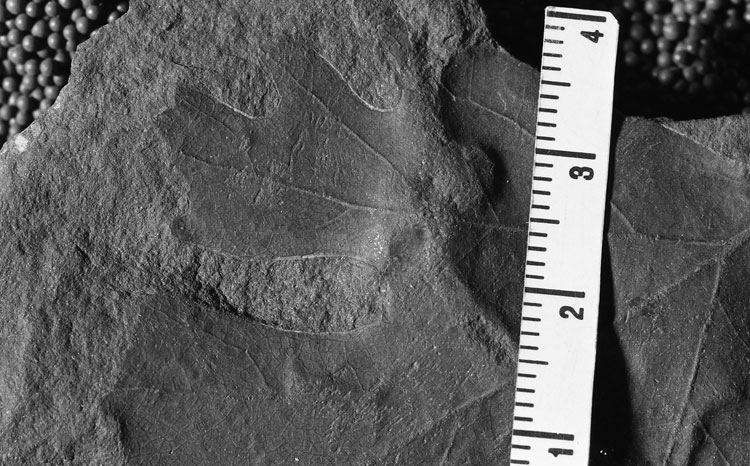Locality
From Hollick (1930) (p. 105-106)
"Yukon River, north bank, about 14 miles below Melozi telegraph station (original No. 3AH13); collected by Arthur Hollick and Sidney Paige in 1903 (lot 3250) (pl. 79, fig. 9). Yukon River, north bank, between Pickart's mine and Nulato (original No. 3AH18d); collected by Arthur Hollick and Sidney Paige in 1903 (lot 3256) (pl. 79, fig. 10)."
Description
From Hollick (1930) (p. 105-106)
"Leaves quinquelobate, with a wedge-shaped base abruptly decurrent on the petiole; lobes irregularly lobo-dentate, lower ones largest; nervation consisting of a midrib with two prominent pairs of subopposite secondaries, which extend to the ends of the lobes, and a smaller pair above, the lower pair suprabasilar, all with branches which extend to the marginal dentitions."
Remarks
From Hollick (1930) (p. 105-106)
"In relegating these leaves to the genus Cissites I have followed the example of other authorities in their reference of leaves of similar characters and general appearance, although it is perhaps unfortunate that the generic name implies relationship with the genus
Cissus and other allied genera of the Vitaceae in which the leaves are characterized by strictly basilar lower secondaries.
The type of the genus is Cissites insignis Heer (1866) (p. 19, pl. 2, figs. 3, 4) from the Dakota sandstone of Nebraska. It is based on a fragment, of a lobed leaf of which the base is lacking; but Heer gives a restoration of the entire leaf (fig. 4) in which the lower pair of secondaries is shown as suprabasilar. This arrangement of these nerves must therefore be regarded as a generic character. Subsequently the same author described similar fragmentary remains from the Atane beds of Greenland under the name Cissites formosus Heer (1882) (p. 85, pl. 21, figs. 5 - 8) but in these specimens also the bases are lacking. However, he gives a restoration of the species (fig. 8) in which the lower pair of secondaries is shown as suprabasilar; and Lesquereux (1892) figures a specimen, referred to C. formosus, from the Dakota sandstone of Kansas, in which this character is well defined. Newberry (1895) (p. 107, pl. 47, figs. 1-8) also refers a number of leaves from the Raritan formation of New Jersey to the species but expresses some doubt in regard to the validity of certain ones; and of his eight figures only one (fig. 4) is shown as having suprabasilar lower secondaries.
Berry (1916) (p. 855, pl. 78, fig. 4) describes and figures a variety of C. formosus, from the Magothy formation of Maryland, which he calls Cissites formosus magothiensis. The base is lacking in the specimen, but a restoration is made, and in this the lower secondaries are indicated as suprabasilar in accordance with the description.
A large number of platanold and Aralia-like leaves have been referred to the genus, such as Cissites harkerianus Lesquereux, C. heerii Lesquereux, C. obtusilobus Lesquereux, C. ingens Lesquereux, C. ingens parvifolia Lesquereux, C. alatus Lesquereux, and C. panduratus Knowlton; others with more or less entire margins, such as C. populoides Lesquereux and C. brownii Lesquereux; and multilobed and dissected forms such as C. parvifolius (Fontaine) Berry. It is evident that all these diverse forms can not possibly belong in one genus or hardly in one family, and, on taxonomic grounds, a revision of the entire group is urgently needed."
